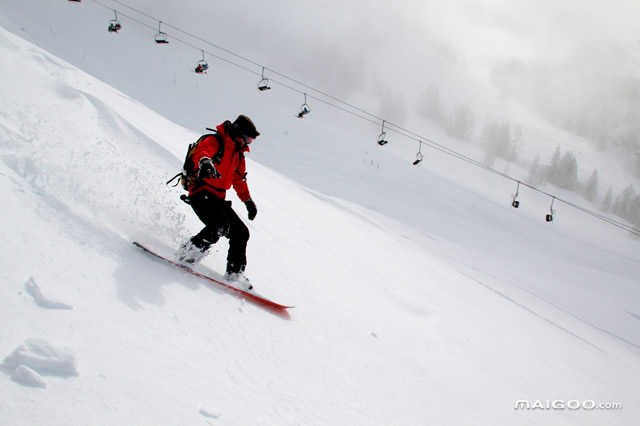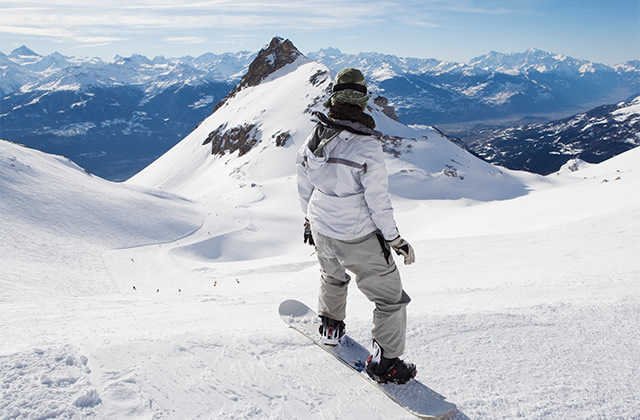What are the main skills of skiing double board?
one,Ski double boardHow to brake
The main methods of skiing double -board brakes are the following:
1. Plide brake
After using the eight -character slope to reach a certain slope, use the head of the hillside to stand on the slope to stand on the slope.Relax on the upper body, hold the head of the snow stick in front of the hip, the snow stick hangs behind the body, the body's focus is on the inside of the front feet.Glyph.The hip weight is evenly distributed on the two snowboards. The internal rotation of the knees and ankle joints is to make the inner side of the two snowboards.The speed of slowness and eventually stop.
2. Draging method
When using the traction ropeway up the mountain, we can wear a full set of Ski equipment. Keep the two Ski panels parallel and stand in the direction of the ropeway. When the traction device arrives, the traction device is stuck on the waist or the traction device is clamped on both legs by hand.Between you can run up with the traction steel wire.The traction device is elastic, so keeping up the body upright when it is dragging on the upper drag is a must -learn skiing skills for beginners.
3. Dragging method
The drag involves a security issue, that is, how to drag and slide down the mountains from the ground.Because the beginner is not good at the slope, it is easy to slide down the drag down, which will collide with the personnel behind, and it is easy to slide down in place, causing a drag block.Pay attention to the brakes of the skiing plate underneath. First, choose some places to slow down the slope, open the tip of the board while dragging down, the snowboard forms an eight -character stand, and then moves out of the dragging.

two,Double -board SkiWhat are the main skills
1. Parallel practice
Cultivate the ability to adapt to snow and skiboards. At this time, it is best to practice in flat ground to maintain the parallel and step by step of the two Ski panels, step by step, and move to the side.
In order to find a sense of balance, it is best not to use skiing sticks at this time.It should be walking on the side of the Snow Road on the Snow Road, and walking step by step.Then, the two Ski panels slid sideways on the side of the mountain at the same time, that is, "slippery".
2. Plow glideing
The Ski board is V -shaped, that is, the two snowboards are opposite. The tail is separated, and the inner steel edge of the two Ski panels slightly stands slightly. The scientific name is "standing blade". In this posture, try to slowly decline. This is called a plow glide.In the state of plow glideing, try to increase the degree of separation of the stand -in blade and increase the double -board tail to reduce the speed of skiing, until straight, this technology becomes a plow brake.
3. Plow turning
After mastering the plow glide and plow brakes, you can try to learn the plow turning.At this time, the body weight distributed evenly on the two snowboards slowly moved to the outside of the turning arc.At the same time, the inner blade (steel edge) of the outer snowboard should be really pressed on the surface of the snow.If you want to stop turning, you only need to re -distribute your body's focus on two snowboards.
4. Plow swing swing back
Keeping the two snowboards parallel, during the taxi process, the center of gravity of the body quickly moves to the snowboard on the lower side of the mountain. This requires the legs under the mountain to have good power and control ability to avoid losing control to rush under the mountain.Then, after turning the arc from this state, the snowboard on the upper side of the mountain can be moved to a state of parallel to another snowboard. The above action process is usually the plow swing.
5. Carving
Then you can learn parallel turning and gliding. Two Ski panels are parallel, and the hips are the same as the exchanges of about the center of gravity. You can learn about the general parallel turning technology through repeated practice.On the basis of continuous practice and practice, you can perfectly control the snowboard and can Ski under the steep venue conditions.
This technology is called parallel taxi and small swinging turns. Ski competition is the development of this technology, which is also a state of disconnection along the lake.This kind of exercise is a relatively wide snowboard that is relatively wide, but it is always parallel. By controlling the body firmly, you can slip.


